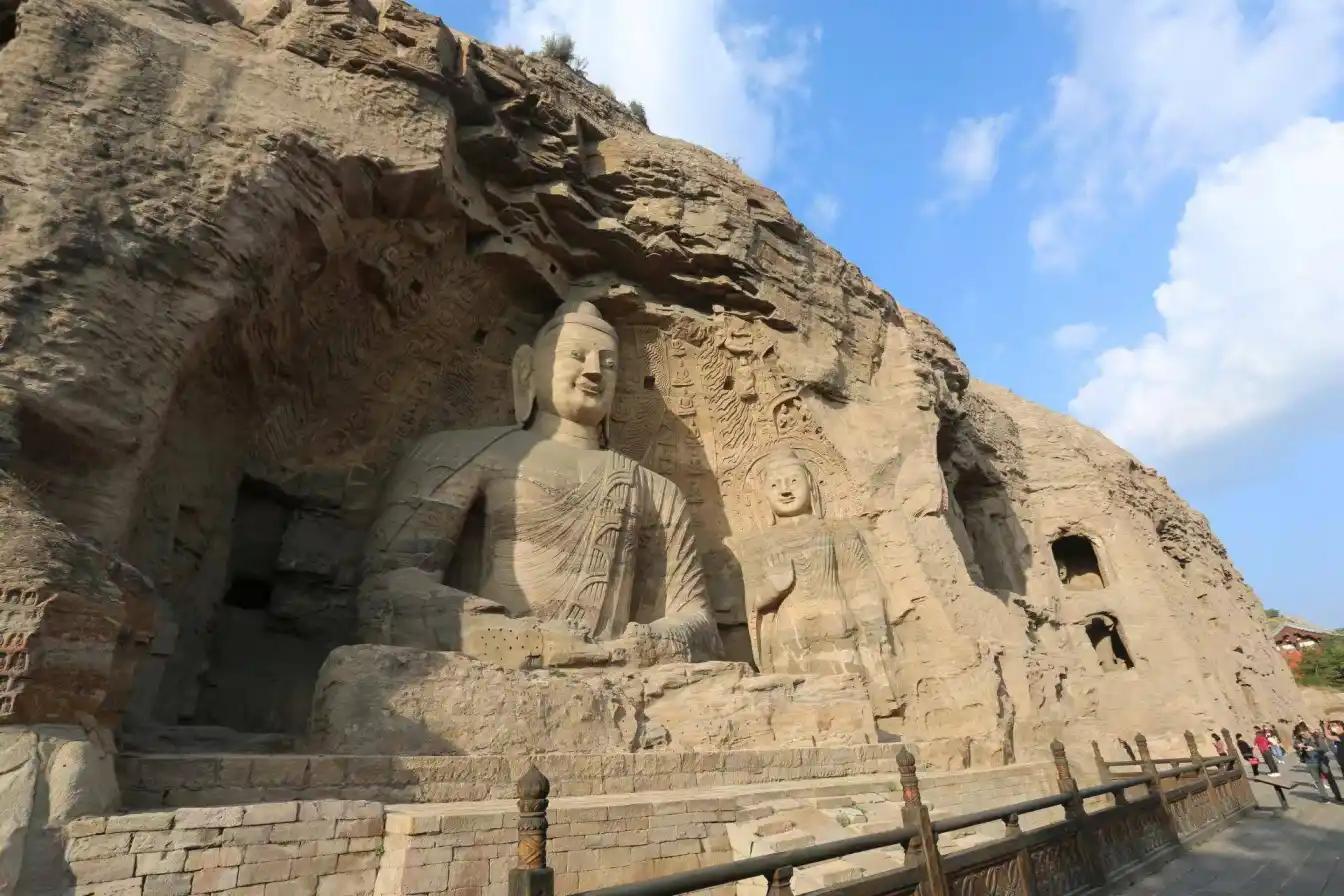
Yungang Grottoes - Ancient Buddhist Art in China
1. Location and Overview 🌍
Location: The Yungang Grottoes are located near the city of Datong in Shanxi Province, China, approximately 16 kilometers west of the city center.
Overview: The Yungang Grottoes, a UNESCO World Heritage Site, are a renowned ancient Buddhist cave complex dating back to the 5th and 6th centuries. This stunning site consists of 252 caves and over 51,000 Buddha statues, making it one of the most significant examples of Chinese Buddhist cave art.
2. Unique Features 🌟
- Historic Artistry: The grottoes showcase intricate carvings and statues, illustrating the evolution of Buddhist art in China.
- Cultural Fusion: The site reflects a blend of Indian, Persian, and Greek influences, highlighting the cultural exchange along the Silk Road.
- Massive Statues: The caves house some of the largest ancient Buddha statues in China, including the colossal seated Buddha in Cave 20, which stands at 17 meters tall.
3. Seasonal Changes 🍂🌸
- Spring (March-May): Mild and pleasant weather with blooming flowers, ideal for outdoor exploration.
- Summer (June-August): Warm temperatures and occasional rain. Early mornings or late afternoons are best to avoid the heat.
- Autumn (September-November): Cooler temperatures and vibrant foliage make it a picturesque time to visit.
- Winter (December-February): Cold and often snowy, offering a serene and less crowded experience.
4. Best Time to Visit ⏰
The best times to visit the Yungang Grottoes are during spring (April-May) and autumn (September-October), when the weather is comfortable, and the scenery is at its most beautiful.
5. Travel Tips ✈️
- Wear Comfortable Shoes: The site involves a lot of walking and some uneven terrain, so sturdy, comfortable shoes are essential.
- Stay Hydrated: Bring plenty of water, especially during the summer months.
- Prepare for the Weather: Dress in layers as temperatures can vary. Sunscreen and hats are crucial in summer, while winter visitors should bundle up warmly.
- Arrive Early: To avoid crowds, try to arrive early in the morning.
- Respect the Heritage: Be mindful of the preservation rules, such as no touching of the carvings and no flash photography inside the caves.
6. Cultural Significance 🏯
The Yungang Grottoes are a symbol of the Buddhist cultural heritage and artistic achievement in ancient China. They represent a historical narrative of religious devotion, artistic excellence, and the exchange of cultural ideas along the Silk Road.
7. Tourist Attractions 📸
- Cave 5: Known for its massive 17-meter-high seated Buddha statue and detailed carvings.
- Cave 6: Features a stunning interior with elaborate wall paintings and intricate stone carvings depicting Buddhist teachings.
- Cave 20: Home to one of the most iconic statues, the colossal seated Buddha.
- Cave 16-20: These caves are interconnected and offer some of the most detailed and best-preserved carvings.
8. Nearby Attractions 🏞️
- Hanging Monastery: Located about 70 kilometers from Datong, this ancient temple is built into a cliff face and offers a unique architectural marvel.
- Huayan Temple: A significant Buddhist temple in Datong, known for its large Buddha statues and ancient pagodas.
- Nine-Dragon Wall: A colorful, intricate screen wall featuring nine dragons, located in Datong.
9. How to Get There 🚗
By Air: The nearest airport is Datong Yungang Airport (DAT), with flights connecting to major cities like Beijing and Xi'an. From the airport, you can take a taxi or a bus to the grottoes.
- By Train:
- To Datong: Datong Railway Station is well-connected with regular trains from Beijing, Xi'an, and other major cities.
- From Datong: Take a local bus (bus 3 or bus 4) or a taxi to reach the grottoes.
- By Bus:
- From Datong City Center: Buses 3 and 4 run frequently between Datong city center and the Yungang Grottoes.
- By Car: Renting a car or hiring a private driver offers flexibility. The site has parking facilities for visitors.
10. Practical Information ℹ️
- Entrance Fee: Approximately 120 RMB (around $18 USD), but prices can vary.
- Opening Hours: Typically from 8:30 AM to 5:30 PM, but times can vary seasonally. It's best to check the official website for the latest information.
- Guided Tours: Available and recommended for a deeper understanding of the site's history and significance.
11. Local Cuisine 🍜
- Datong Meat Pie: A local specialty, these pies are filled with seasoned meat and cooked to crispy perfection.
- Shanxi Noodles: Try the traditional hand-pulled noodles, often served with a variety of toppings like meat, vegetables, and savory sauces.
- Yellow River Carp: A popular dish in Shanxi cuisine, featuring tender carp cooked with flavorful spices and sauces.
12. Conclusion 🌟
The Yungang Grottoes are a must-visit destination for history buffs, art enthusiasts, and cultural explorers. This ancient site offers a fascinating glimpse into China's rich Buddhist heritage and artistic legacy. Plan your trip to marvel at the intricate carvings, massive statues, and breathtaking scenery of the Yungang Grottoes.
















Comments
Leave a reply